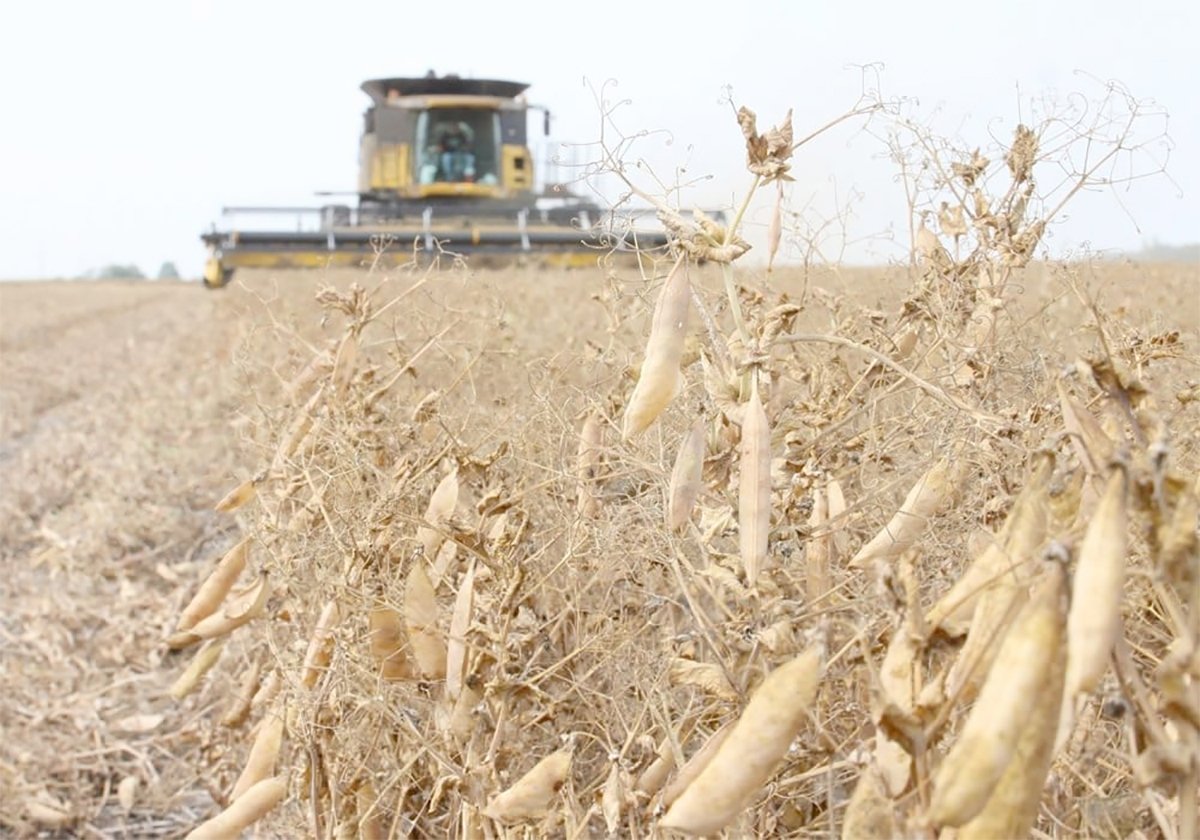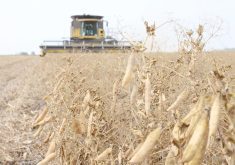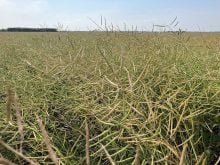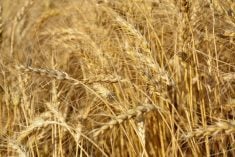The Canadian Grain Commission is continuing to assess a machine that determines chlorophyll content in canola shipments delivered to country elevators.
Randy Dennis, the commission’s chief grain inspector, said last week that a program aimed at assessing the machine’s accuracy and applicability is nearly complete. A decision to adopt the new technology on an industry-wide basis could be made as early as 2013.
However, the Western Standards Committee must first review the results of the assessment, and a decision must be made on whether to continue looking at the pros and cons of adopting the new technology.
Read Also

Chinese, Indian tariffs take toll on pea prices
The disruption of pea exports from Canada’s largest customers will likely result in slow pea exports for the remainder of the crop year.
If it is eventually adopted, the system would provide a science-based alternative to the crush and count system now used to determine chlorophyll content in producers’ canola deliveries.
“We are thinking at this point that the machine has very good potential,” said Dennis.
“But I wouldn’t expect (a decision) at least for another year because there’s a lot of work that still has to go in.”
The machine that the commission is testing is called the Instalab 600.
It weighs 65 pounds and is manufactured by Dickey-john, an American company that makes grain monitoring systems, electronic controllers, moisture testers, ground speed sensors and GPS systems.
The machine uses a technology known as near infrared reflectance spectroscope and is capable of testing a canola sample in approximately a minute.
The grain commission bought five of the machines in 2010 and installed three of them in country elevators in Western Canada.
The remaining two were installed in port facilities.
Canola deliveries were sampled and tested at point of delivery and again when the canola arrived at port position.
Samples from each delivery were also sent to the commission’s head office in Winnipeg for additional testing.
Test results from all three locations were then compared to determine if variations in chlorophyll values fell within an acceptable range.
The evaluation of the Instalab 600 is part of a larger CGC initiative to reduce dependence on visual assessment methods now used to assess grain quality in Western Canada.
The commission would like to move away from visual assessments and toward science-based systems that are more accurate and less subjective.
“Grading canola now, and assessing distinctly green seeds, is subjective, and that’s what we’re trying to take out of (the system),” Dennis said.
New technology adopted by the western Canadian grain industry must first go through a lengthy review process that includes assessment by the grain commission, review by the Western Standards Committee, approval for further study and discussion of the technology’s merit and applicability by industry stakeholders, including producers, processors, grain handlers and exporters.
Dennis said a machine that has the potential to produce rapid and accurate test results would take much of the guesswork out of canola grading, but it could also give rise to other concerns.
Because the machine has the potential to assign precise numeric values to chlorophyll content, adoption of the machinery wouldn’t likely occur until the industry has had an opportunity to discuss new chlorophyll thresholds for different grades of canola.
The machine measures chlorophyll content in parts per million.
In addition, the cost of buying and installing the machines and training elevator staff to use them could be prohibitive.
Dennis said grain companies would likely be responsible for buying the machines and installing them at every primary elevator if the technology is adopted on an industry-wide basis.
The machines are valued at about $17,000 each.
Grain companies may not consider that type of capital investment necessary or worthwhile, Dennis added.
“Is it economically viable to put one of these pieces of equipment into each of the primary elevators and terminals and for the elevator staff to work with?” he said.
The commission had hoped to conduct multiple tests on 500 to 600 canola deliveries before sharing results of its assessment with the Western Standards Committee this spring.
About 480 samples had been conducted as of last week.
Dennis said sufficient testing is likely to be completed by the time the committee’s oilseeds subcommittee meets in March. From there, the committee will determine if the technology warrants further consideration.
Meanwhile, CGC attempts to find a machine that assesses wheat quality at the point of delivery have hit another snag.
In collaboration with a private sector partner, the commission had been testing an enzyme-linked immunosorbent assay (ELISA) system to detect enzymes that are released when a wheat kernel begins to sprout.
However, the private-sector partner has since withdrawn support for the project.















